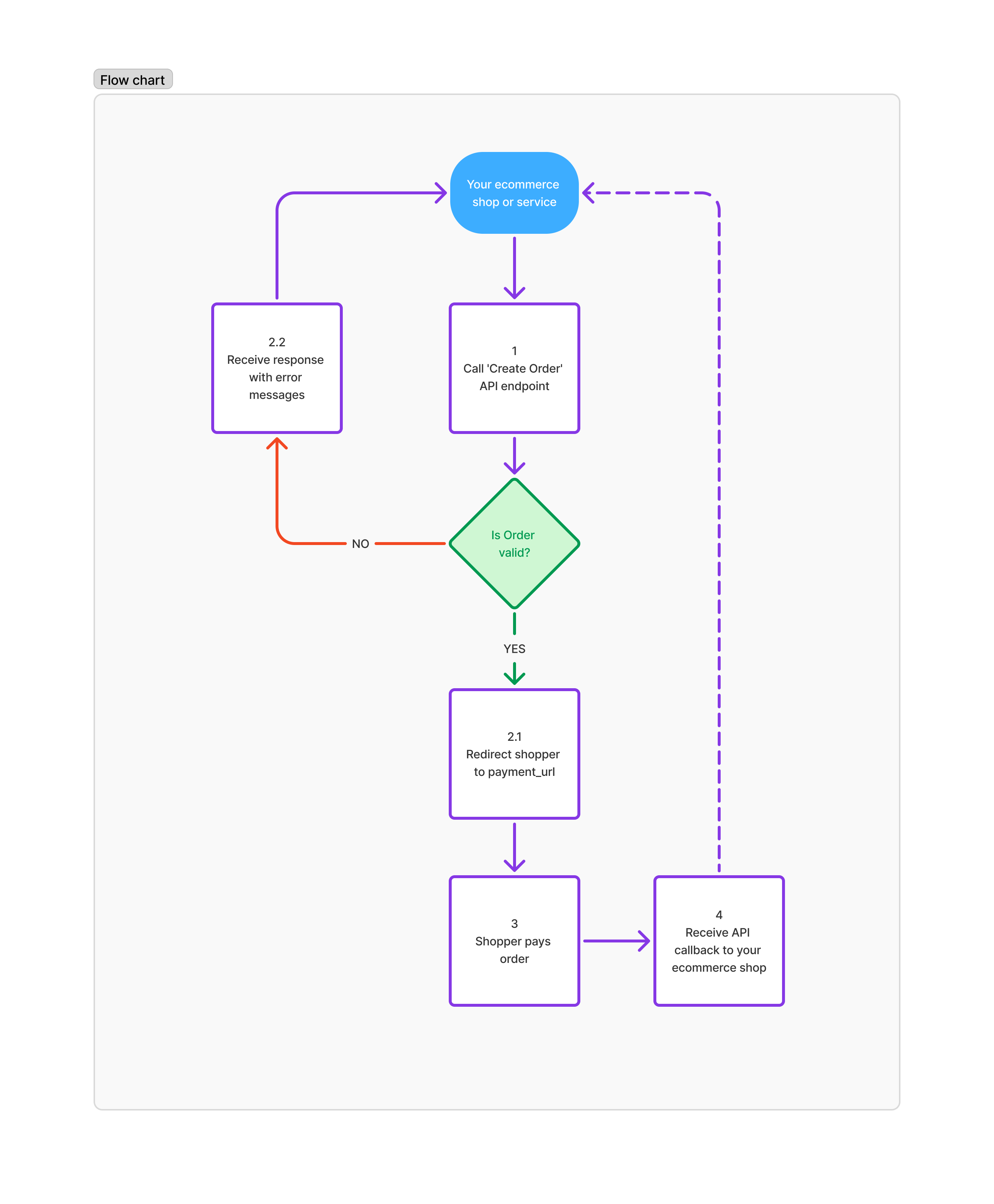
The CoinGate Payment Processing API allows you to seamlessly accept cryptocurrency payments and settle them in fiat currencies (EUR, USD, GBP) or crypto. The integration is designed to be lightweight, cost-efficient, and developer-friendly—helping merchants expand their global reach by accepting payments in Bitcoin, Ethereum, and other digital assets.
With CoinGate, your customers can pay in crypto, while you receive payouts in fiat or crypto with automatic conversion.
📌 How It Works – Example Flow
- A customer selects crypto as the payment method for a €100 order.
- Based on real-time rates, they’re shown the amount to pay in their chosen cryptocurrency.
- After payment confirmation, you receive ~€99 (minus fees) in your CoinGate account.
- You can withdraw funds to your bank in EUR, USD, or GBP—or hold them in crypto.
🔧 Integration Setup
Follow these steps to integrate CoinGate into your checkout flow:
-
Create an Order
Use the Create Order API to initiate a new payment. -
Validate Order Response
2.1 If the order is valid, CoinGate will respond with
HTTP 200 OKand return the order data, including thepayment_url.➤ Redirect the customer to this
payment_urlso they can complete the payment.2.2 If the order is invalid, you’ll receive an error (
422 Unprocessable Entity) along with a message explaining why the order could not be created. -
Customer Makes a Payment
The shopper selects their preferred currency and blockchain platform (if applicable) and proceeds with the crypto payment. -
Receive Payment Status via Callback
CoinGate will notify your system of payment status changes using the Payment Callback API . ➤ Handle these callbacks in your backend to update the order status accordingly in your e-commerce system.
🔐 API Authentication
Authentication is required for all API requests of the Payment Gateway.
You must include your personal authentication token in the request headers when interacting with CoinGate APIs. To obtain your token, follow the instructions in the API Authentication guide.
Note: The only exception is the Supported Currencies endpoint, which is publicly accessible and can be called without authentication.
